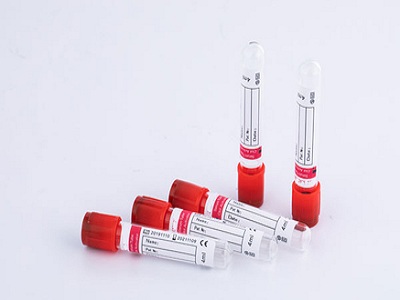We pay attention to in vacuum blood collection
1. Selection of vacuum blood collection tubes and injection sequence
Select the corresponding test tube according to the test item. The blood injection sequence is culture flask, ordinary test tube, test tube containing solid anticoagulant, and test tube containing liquid anticoagulant. The purpose of following this sequence is to minimize analytical errors due to specimen collection. Blood distribution sequence: ①The sequence of using glass test tubes: blood culture test tube, serum tube without anticoagulant, sodium citrate anticoagulation test tube, other anticoagulant test tube. ②The order of using plastic test tubes: blood culture test tube (yellow), sodium citrate anticoagulation test tube (blue), serum tube with or without blood coagulation activator or gel separation, gel or no gel Heparin tubes (green), EDTA anticoagulation tubes (purple), and blood glucose breakdown inhibitor tubes (grey).
2. Blood collection site and posture
Infants and young children can take blood from the medial and lateral borders of the thumb or heel according to the method recommended by the World Health Organization, preferably the head and jugular vein or the anterior fontanelle vein. For adults, the median cubital vein, the back of the hand, the wrist joint, etc. without congestion and edema should be selected. The vein of individual patients is on the back of the elbow joint. Patients in outpatient clinics should take more sitting positions, and patients in wards should take more lying positions. When taking blood, instruct the patient to relax, keep the environment warm, prevent venous contracture, restraint time should not be too long, and do not beat the arm, otherwise it may cause local blood concentration or activate the coagulation system. Try to choose a thick and easy-to-fix blood vessel for puncture to ensure that the needle hits the blood. The angle of needle insertion is generally 20-30°. After seeing the blood return, move forward slightly in parallel, and then put on the vacuum tube. The blood pressure of individual patients is low. After the puncture, there is no blood return.

3. Strictly check the validity period of blood collection tubes
It must be used within the validity period, and must not be used when there is foreign matter or sediment in the blood collection tube.
4. Paste the barcode correctly
Print the barcode according to the doctor's instructions, and paste it on the front after checking, and the barcode cannot cover the scale of the blood collection tube.
5. Timely inspection
Blood samples are required to be sent for inspection within 2 hours after collection to minimize the influencing factors. When submitting for inspection, avoid strong light exposure, shelter from wind and rain, anti-freeze, anti-high temperature, anti-shake, and anti-hemolysis.
6. Storage temperature
The storage environment temperature of blood collection tubes is 4-25°C. If the storage temperature is 0°C or lower than 0°C, it may cause the rupture of blood collection tubes.
7. Protective Latex Cover
The latex cover at the end of the puncture needle can prevent the blood collection test tube from continuing to bleed and pollute the surrounding area, and plays the role of sealing blood collection to prevent environmental pollution. The latex cover must not be removed. When collecting blood samples from multiple tubes, the rubber of the blood collection needle may be damaged.
Post time: Nov-01-2022





